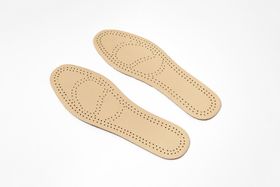Plantar Plate Tears vs. Neuromas: Similarities and Differences
Learn more about the similarities and differences between plantar plate tears and neuromas affecting the forefoot, including how to diagnose the conditions.
Published April 25, 2022.
The forefoot is a common area of the foot where pain is experienced. Due to the nature and complexity of the structures of the forefoot, accurately diagnosing the cause of the pain may be difficult.
Two commonly misdiagnosed foot conditions are plantar plate tears and neuromas, which are both associated with pain in the forefoot.
What Is a Plantar Plate Tear?
A plantar plate tear involves a rupture of the plantar plate, which is a thick ligament running from the big toe to the small toe and keeps the toes in line when weight is placed on the foot.
Sharp pain in the forefoot is a prominent symptom, subsiding into an ache when resting. Swelling and/or redness in the foot is another common symptom and is aggravated by exercise. The tear in the plantar plate causes a change in toe direction, where the toes separate into a V-shape.
The most common mechanism of injury is an overload of pressure on the forefoot, leading to strain and eventually a tear in the plantar plate. Instability occurs in the area around the metatarsophalangeal joint as the size of the plantar plate tear increases.
What Is a Neuroma?
Morton’s neuroma is a benign, abnormal growth of nerve tissue between the metatarsal bones of the forefoot.
Similar to plantar plate pain, neuromas cause sharp, burning pain in the ball of the foot, with some people reporting that it feels like they are walking on a pebble.
Repetitive irritation of the nerve between the bones of the third and fourth metatarsal bones leads to the development of a neuroma. As the nerve in the forefoot is irritated through use, the nerve becomes thick and inflamed, leading to pain as the condition progresses. High heels, foot deformity, and high-impact sports can increase the risk of developing a neuroma.
How to Diagnose a Torn Plantar Plate or Neuroma
The main diagnosing factor for a plantar plate tear is localized pain under the metatarsal joint, swelling in the area, pain, and increased spread between the second and third toes. Another indicator of this condition is observing a toe out of alignment when weight is placed on the foot. With Morton's neuroma, the primary symptom of pain can be reproduced using a thumb and index squeeze test on either side of the foot.
As many of the symptoms mimic those of Morton's neuroma, doctors may require x-rays or ultrasounds to correctly diagnose a torn plantar plate.
Related Posts
Babafemi Adebajo
5 Exercises for Morton's Neuroma: Alleviate Your Foot Pain
Babafemi Adebajo
What Causes Pain in the Top of Your Foot After Running?
Janik Sundstrom
The Benefits of Taping for Cuboid Syndrome Treatment
Babafemi Adebajo
Best Tennis Ball Exercises for Plantar Fasciitis
Babafemi Adebajo









